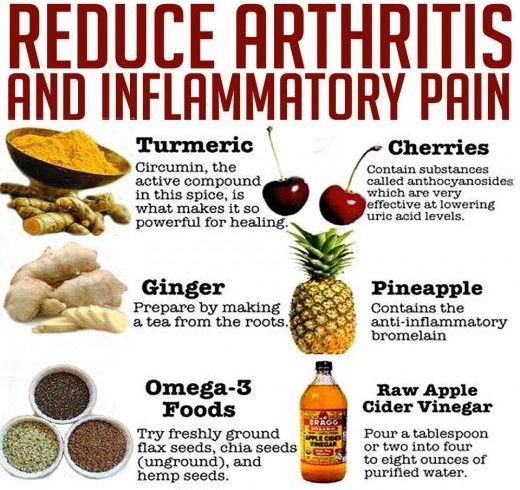
A comprehensive description of the food environment is an important first step towards promoting healthy eating habits and climate action. This will help to identify entry points for improving diets, and reducing climate risk. It will be possible to use metrics and tools to inform policy makers by providing a detailed description of the food environment. This article describes key components of a good food environment. It is not just about measuring the amount of pollution or the quality of food available. It should also include strategies that improve the diets of the planet and promote overall health.
The food environment can include both built and natural settings. They are divided according to the level of complexity. Informal markets are more common in rural LMICs than in urban areas. The availability of markets and access to healthy foods influence the choice of foods and influence health and nutrition. Formal food market are common in urban areas. A well-designed food environment can encourage consumers to choose healthy food. But a healthy diet isn't enough. To encourage consumption of healthier foods, it must also provide opportunities for food-related activities.

When we examine the interactions between food systems and food systems, it is possible to gain a better understanding about food environment. It is essential to understand how the food environment works in order to provide healthy meals. The environment has a direct impact on the food we eat. Children and adults have different food environments. Despite these differences, healthy and unhealthy food are almost identical in the human body. For a healthy diet, it is important to have a healthy food environment.
The systematic analysis of all its elements is required in order to develop a food environment. It must be understood that the food environment is a vast and complicated system. A food environment is made up of many elements, including affordability, promotion, quality, and accessibility. The food environment can vary from one location to the next. The food environment will have different effects on the diets of people with different socioeconomic backgrounds. But, these environments can help to prevent obesity and improve the overall health of those who live in them.
For the good of human health, a healthy food environment is vital. Its components impact on the health of people who live in a certain country. They affect the nutritional quality of food and how people eat. A poorer population is more susceptible to obesity due to a poor food environment. For these reasons, a food environment should be improved and the environment should be considered in a public-private partnership. It must be transparent, accessible and accessible to all people, regardless of their cultural background.

The food environment is a crucial component of a healthy diet. The food environment can have an impact on how much and where people eat. For example, the food environments in restaurants, workplaces, and schools are all critical to healthy eating. In addition, the food environment influences the choices of individuals. Many of the most popular foods are not readily available in their locality. This means that they should not be limited to eating in the city.
FAQ
Is it possible to have a weak immune system due to being cold?
Cold causes a decrease in immune system strength. This is because white blood cells are less effective at fighting infection. You will feel less pain if you are cold.
How can I live my best life everyday?
To live a happy life, the first step is to discover what makes you happy. Once you've identified what makes your happy, you can start to work backwards. You can also inquire about the lives of others.
You can also read books like "How to Live Your Best Life" by Dr. Wayne Dyer. He talks about finding happiness and fulfillment in all aspects of our lives.
Exercise: Good or Bad for Immunity?
Your immune system is strengthened by exercise. Your body makes white blood cells that fight infections when you exercise. You also get rid of toxins from your body. Exercise helps prevent diseases like cancer and heart disease. Exercise can help reduce stress.
Exercising too frequently can make your immune system weaker. Your muscles can become sore if you exercise too much. This can cause inflammation as well as swelling. The body then needs to make more antibodies to fight infection. These extra antibodies can lead to allergies or autoimmune disorders.
So, don't overdo it!
How do I find out what's best for me?
Your body is your best friend. Your body knows best when it comes to how much exercise, food, and rest you need. It's important to pay attention to your body so you don't overdo things. Be aware of your body and do what you can to maintain good health.
Get immune enhancement with herbs and supplements
To boost immunity function, herbs and natural remedies are available. Some common examples include garlic, ginger, oregano oil, echinacea, ginkgo biloba, and vitamin C.
These herbal remedies are not meant to replace medical treatment. They may cause side effects such as nausea, diarrhea, stomach cramps, headaches, dizziness, and allergic reactions.
How often do I need to exercise?
It is important to exercise for a healthy lifestyle. You don't have to exercise for a certain amount of time. Finding something that you love and sticking with it is the key.
Three times a week, you should be aiming to complete 20-30 mins of moderate intensity activity. Moderate intensity means that you will still be working hard even after your workout is over. This type of workout burns around 300 calories.
You can walk for 10 minutes every day if that is what you prefer. Walking is low in impact and easy for your joints.
Jogging three times a week for 15 mins is enough if you want to run. Running can help you burn calories and to tone your muscles.
You should start slowly if it's your first time exercising. Begin with 5 minutes of cardio every other day. Gradually increase duration until you achieve your goal.
Is cold a sign of a weak immune response?
It's been said that there are two kinds of people in the world; those who love winter and those who hate it. You might wonder why you feel so miserable in the cold, no matter how much you love or hate winter.
The answer lies in the fact that our bodies are designed to function best during warm weather. We evolved to thrive in hot environments because of the abundance of food resources.
However, our environment is quite different than that of our ancestors. We spend much more time indoors, often exposed to extreme temperatures (cold and heat), and we eat foods that are processed rather than fresh.
As a result, our bodies aren't used to such extremes anymore. That means that when we do venture outdoors, we're left feeling tired, sluggish, and even sick.
These effects can be reversed, however. You can combat these effects by making sure you are well-hydrated all day. Hydration is key to keeping your body well hydrated, flushing out toxins and keeping your system healthy.
It is important to eat healthy foods. The best way to maintain your body's optimal temperature is by eating nutritious food. This is particularly helpful for anyone who spends long periods of time inside.
Consider taking a few moments each morning to meditate. Meditation helps you relax your mind and body, which makes it easier to deal with stress and illness.
Statistics
- According to the 2020 Dietary Guidelines for Americans, a balanced diet high in fruits and vegetables, lean protein, low-fat dairy and whole grains is needed for optimal energy. (mayoclinichealthsystem.org)
- The Dietary Guidelines for Americans recommend keeping added sugar intake below 10% of your daily calorie intake, while the World Health Organization recommends slashing added sugars to 5% or less of your daily calories for optimal health (59Trusted (healthline.com)
- nutrients.[17]X Research sourceWhole grains to try include: 100% whole wheat pasta and bread, brown rice, whole grain oats, farro, millet, quinoa, and barley. (wikihow.com)
- Extra virgin olive oil may benefit heart health, as people who consume it have a lower risk for dying from heart attacks and strokes according to some evidence (57Trusted Source (healthline.com)
External Links
How To
27 Steps to a healthy life when your family eats only junk food
Cooking at home is the most popular way to eat healthier. But, it can be hard to make healthy meals because many people don't know how. This article will offer some suggestions on making healthier dining choices at restaurants.
-
Find restaurants that offer healthy options.
-
Before ordering any meat dishes, order vegetables and salads.
-
Ask for sauces with no added sugar.
-
Avoid fried foods.
-
Choose grilled meats over fried.
-
Don't order dessert unless your really need it.
-
You should always have something to eat after your dinner.
-
Take your time and chew slowly.
-
Take plenty of water with your meals.
-
Breakfast and lunch should not be skipped.
-
Fruits and vegetables are a great addition to every meal.
-
Consider drinking milk instead of soda.
-
Sugary drinks should be avoided.
-
Limit salt consumption in your diet.
-
Try to limit the number of times you go to fast food restaurants.
-
Ask someone to come along if you are unable to resist temptation.
-
Don't let your children watch too much TV.
-
Turn off the television during meals.
-
Do not drink energy drinks.
-
Take regular breaks from work.
-
Get up at a reasonable hour and do some exercise.
-
Move every day.
-
Start small and build up gradually.
-
Set realistic goals.
-
Be patient.
-
You can exercise even when you don't feel like doing it.
-
Positive thinking is important.